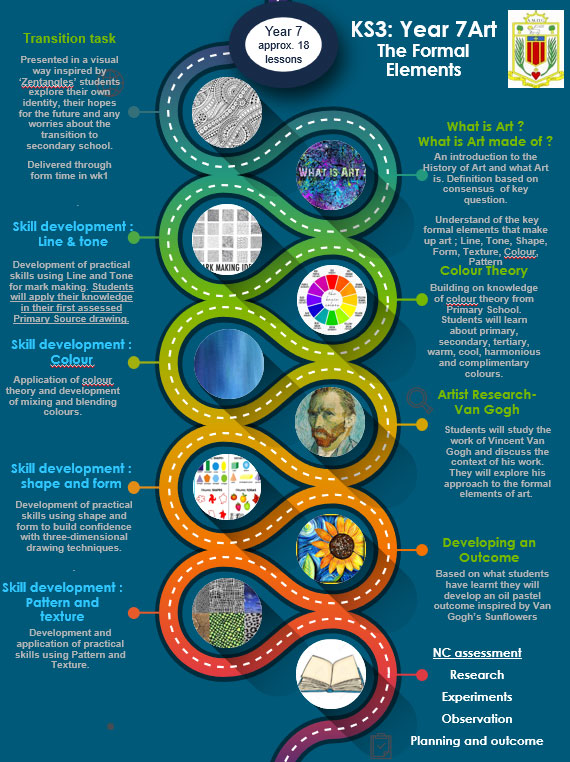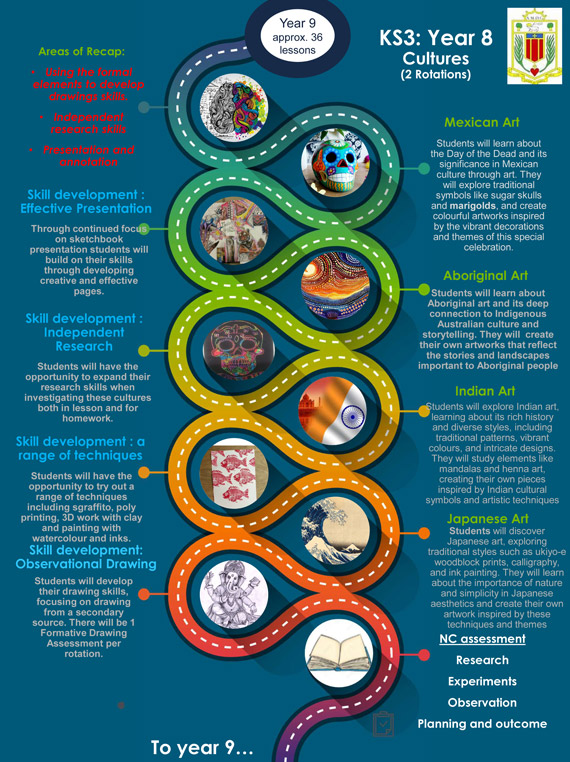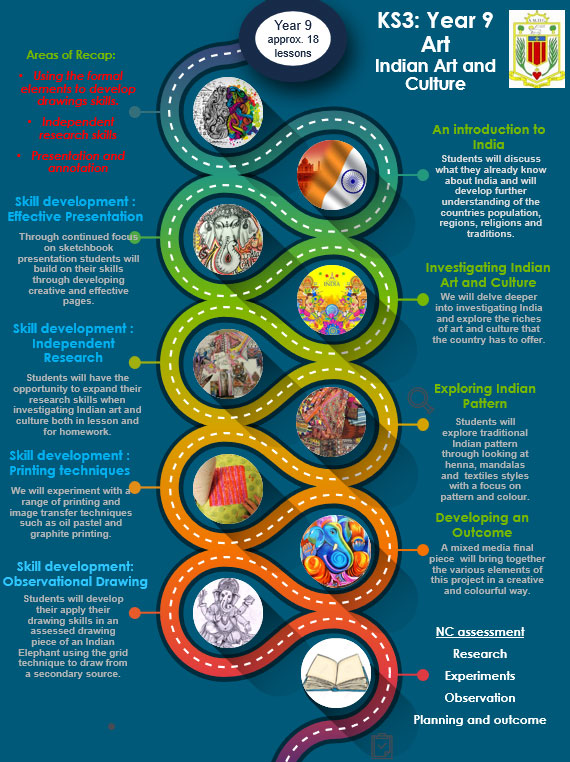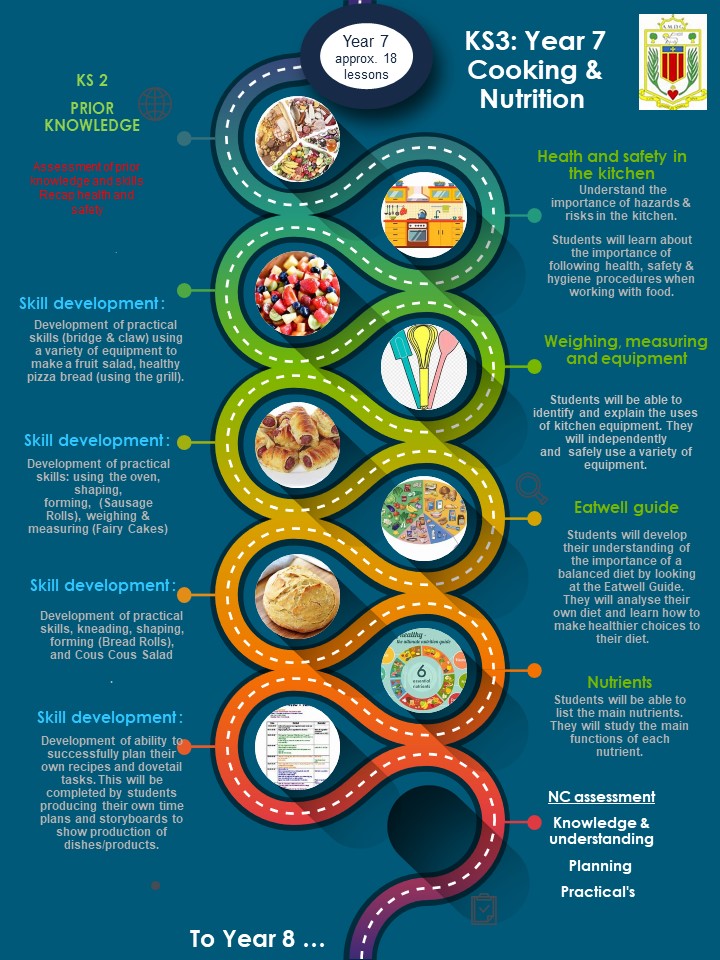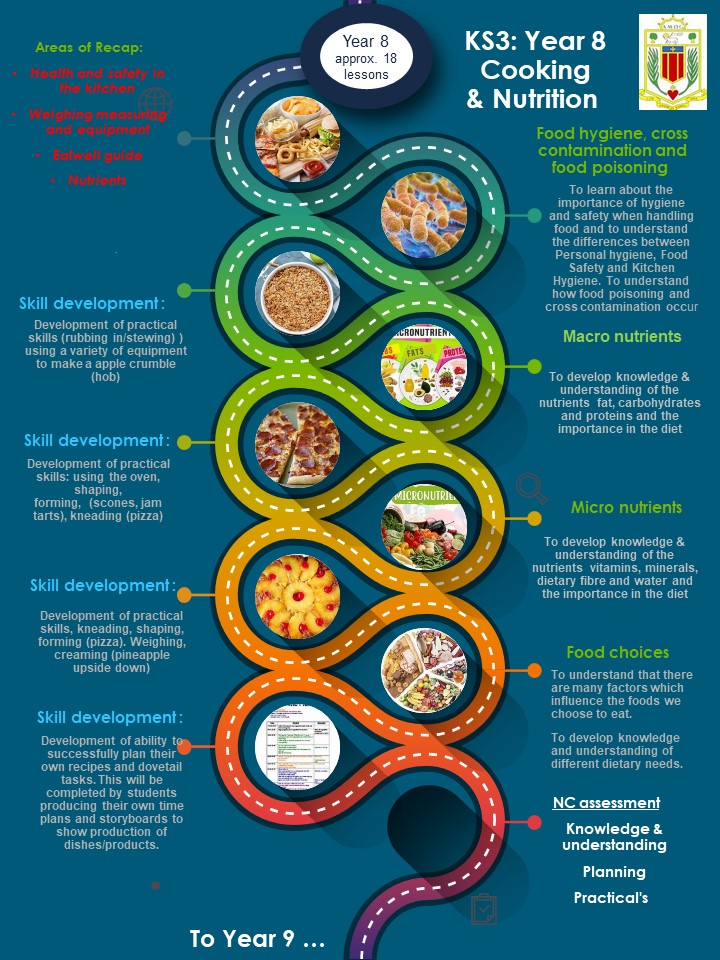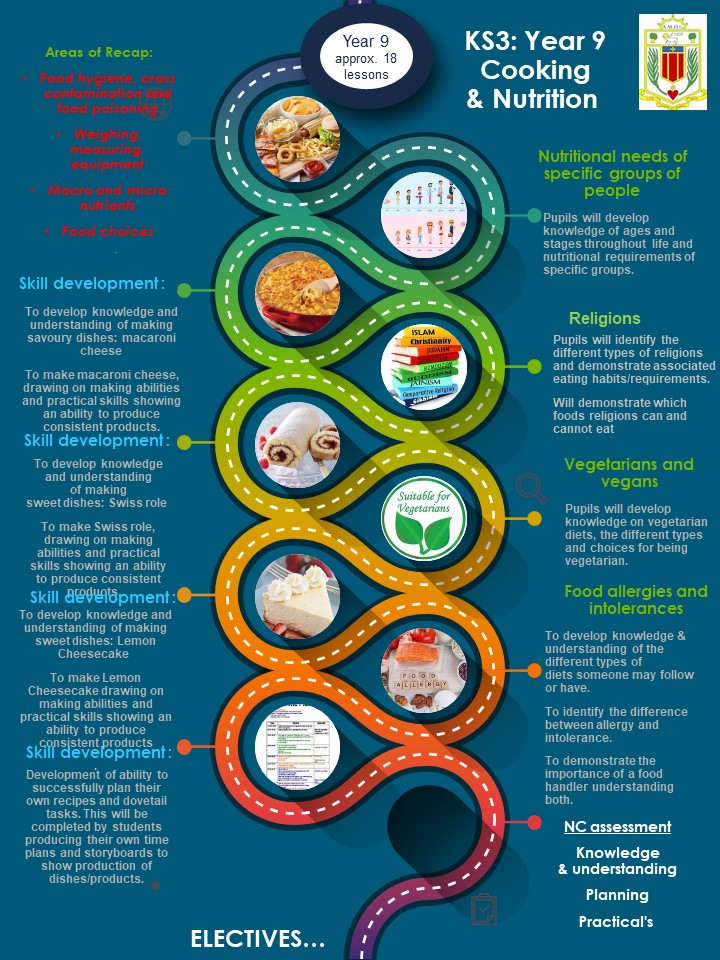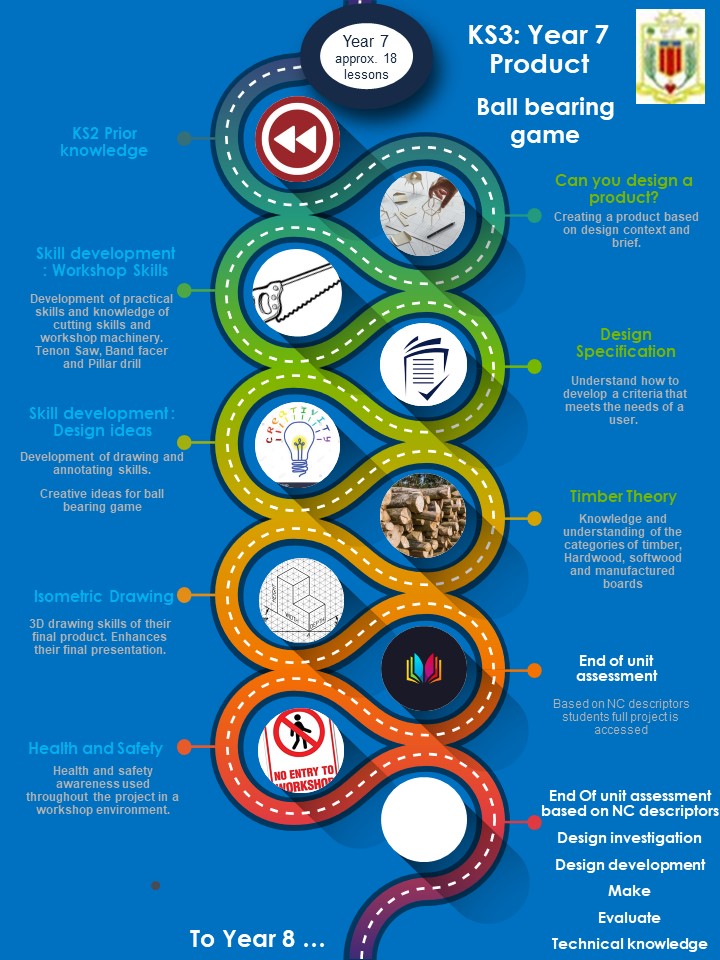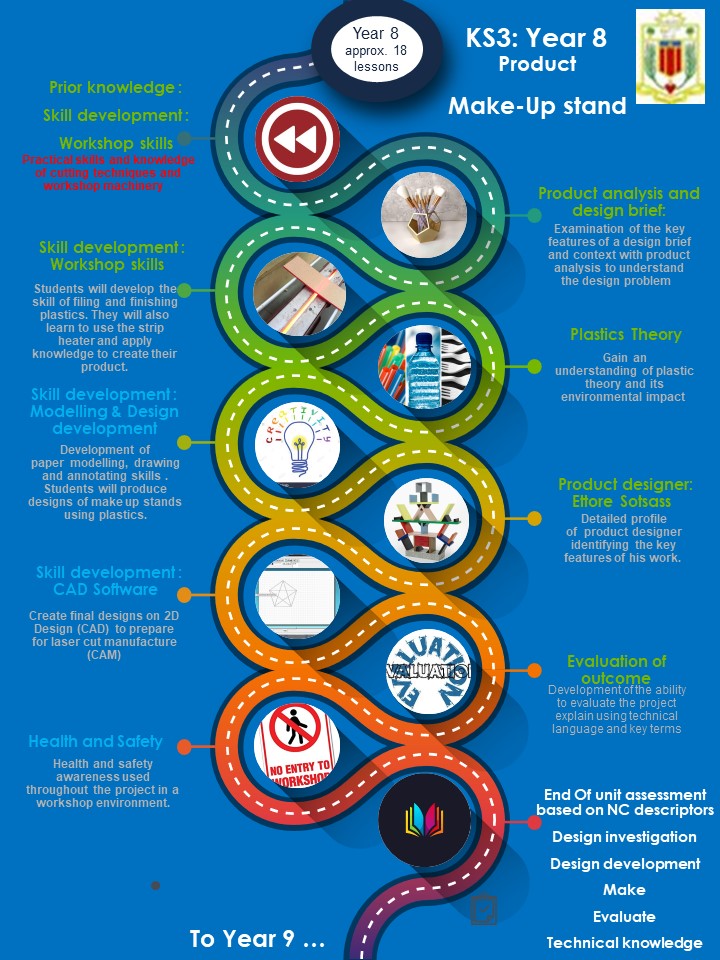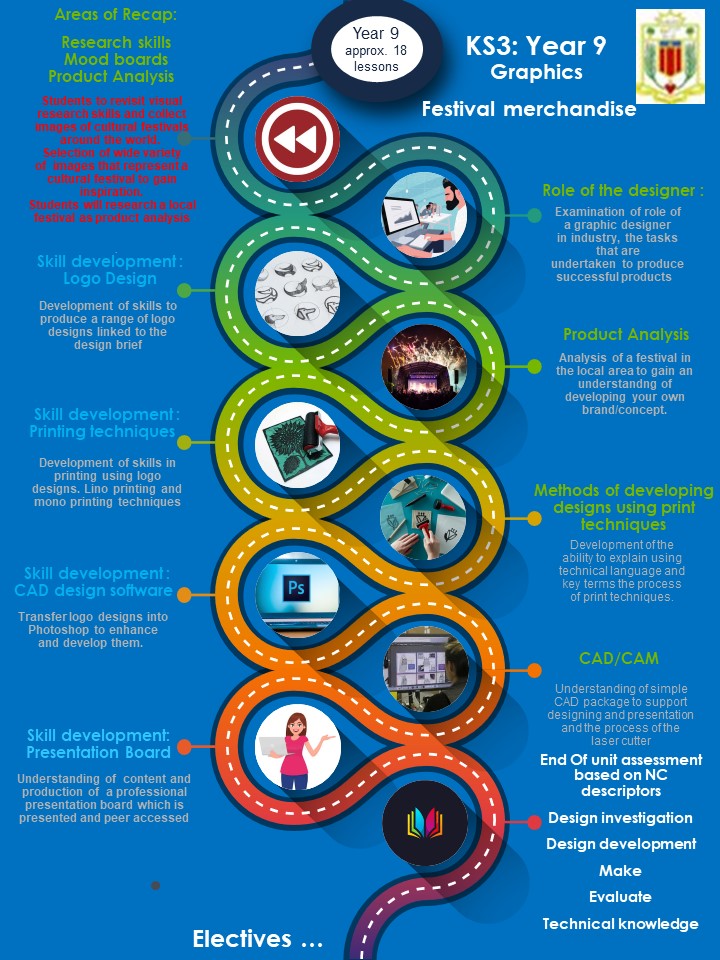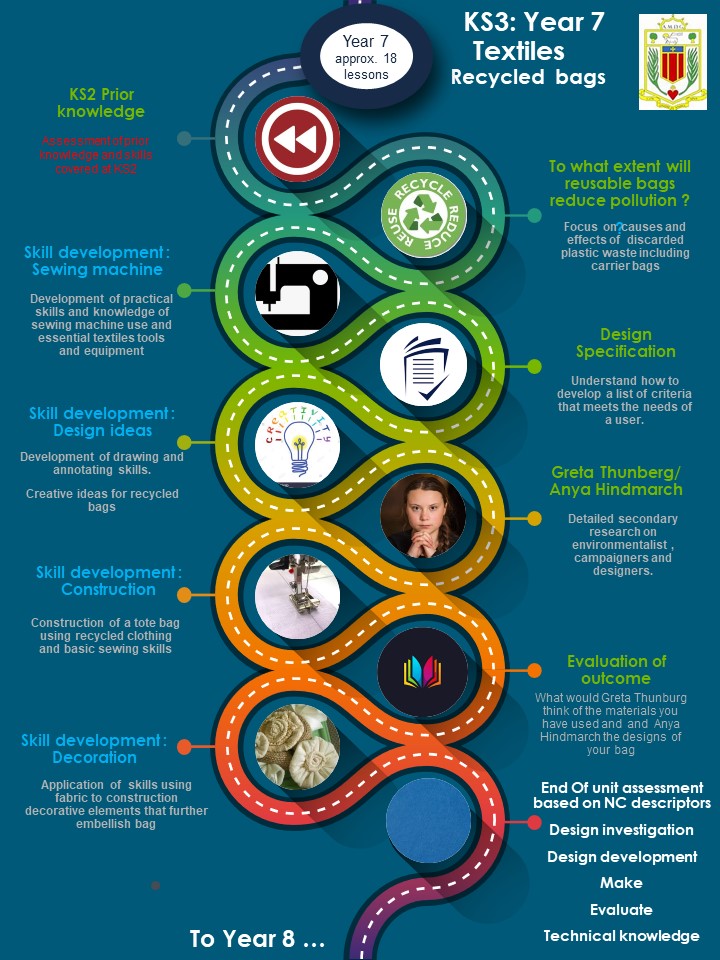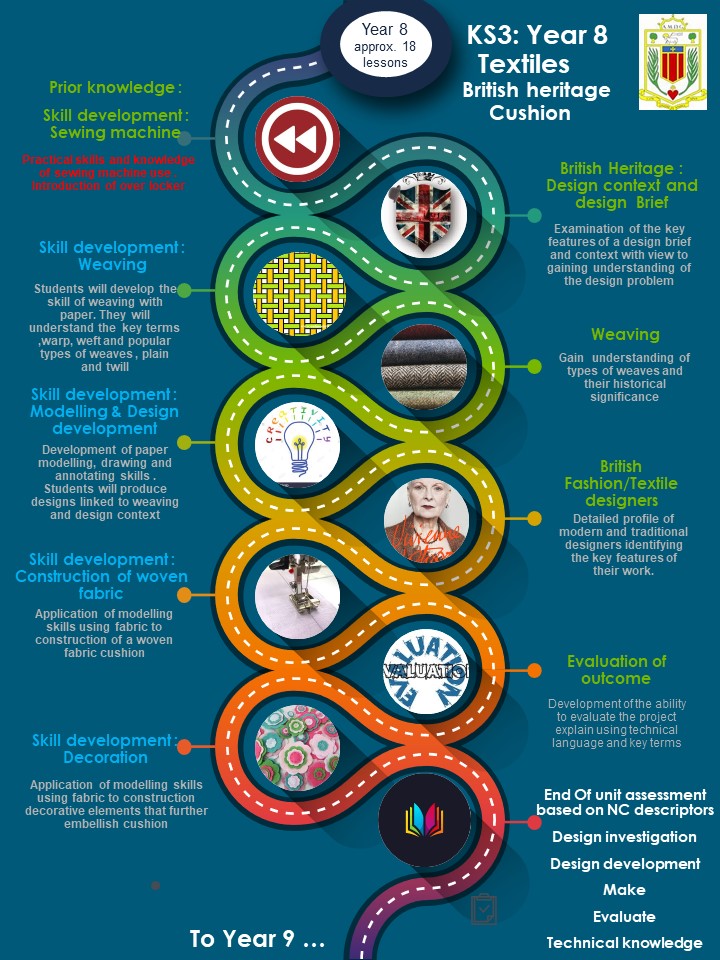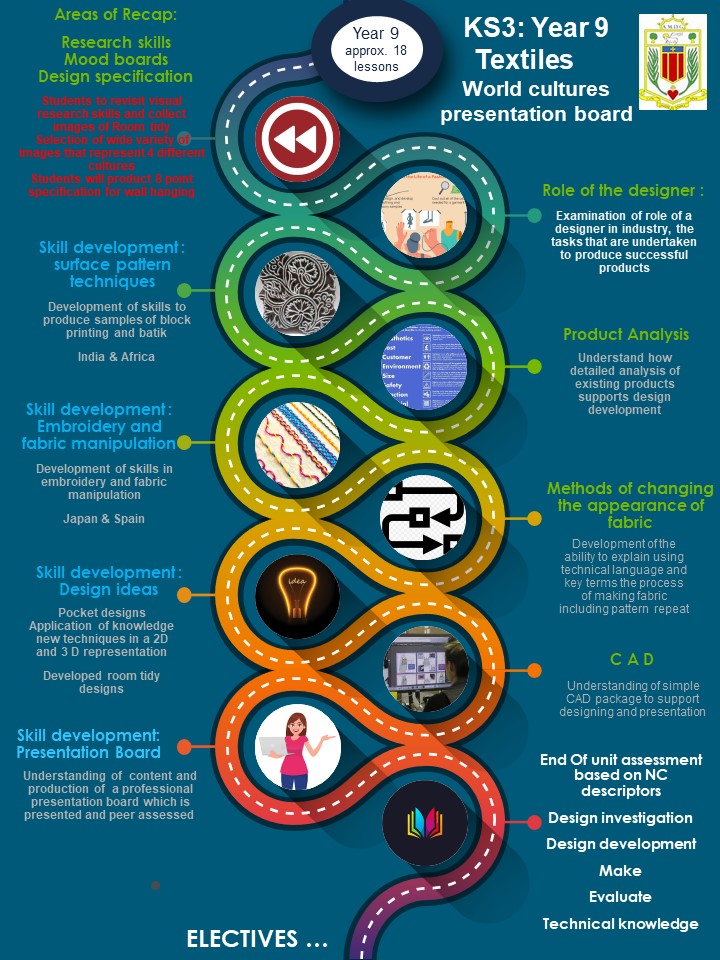- Art and Design - Introduction
- Programme of Study KS3
- Programme of Study KS4 Art
- Programme of Study KS4 Food Preparation and Nutrition
- Programme of Study KS4 WJEC Level 1/2 Award in Hospitality and Catering
- Programme of Study KS4 BTEC Art and Design - Fashion and Textiles focus
- Programme of Study KS4 GCSE Photography
Introduction
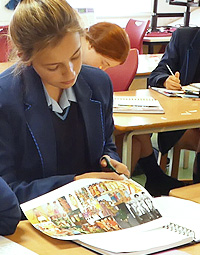 The overarching aim of the department is to give students the opportunities to develop creativity, ingenuity, innovation and problem-solving skills.
The overarching aim of the department is to give students the opportunities to develop creativity, ingenuity, innovation and problem-solving skills.
In Art we aim to develop the creative and artistic ability of our students. Embracing the importance of art in a wider context through the study of the work of traditional and modern artists and designers, both with local connections and worldwide reach.
In Design Technology subjects students are encouraged to identify needs and opportunities and access the necessary knowledge of skills and processes to respond by developing ideas and making products. In Cooking and Nutrition are aim is to instill in our students a love of cooking. They will access the skills and knowledge to cook a range of products and apply the principles of nutrition and healthy eating.
We aim to ensure that there is a variety of courses at levels that meets the needs and aspirations of all of our students.
Staff
Miss A Ryder - Head of Department
Mrs M Fox - Second in Department, Teacher of Food Technology
Miss C Diakou - Teacher of Art and Photography
Ms W Lees - Teacher of art and Photography
Mrs A Topham - Teacher of Art and Graphics
Mrs C Roberts - Teacher of Textiles
Ms L Chadwick - Teacher of Textiles
Mrs G Young - Textiles Technician
Miss E Atherton - Art and Technology Technician
Mrs A Bisson - Food Technician
Mrs L O'Obrien - Food Technician
Programme of Study KS3
Art
Food
Product Design
Textiles
You will start along the path of becoming an innovator and creative problem solver by experiencing a range of subject specific areas such as:
- Textiles
- Product Design
- Cooking and Nutrition
- Art and Design
You will be encouraged to think about form, function, materials, safety and develop high quality making outcomes using the vast range of tools and equipment that the department has.
Programme of Study KS4 Art
Head of Department: Mrs A Ryder
Contact email address: rydera@broughtonhall.com
Specification: AQA
Qualification: GCSE Fine Art
 Studying Art at GCSE encourages self-expression and creativity and can build confidence as well as a sense of individual identity. It can also help you to develop problem solving skills, critical thinking and the ability to interpret the world around us. On this course you will build on the practical skills used in Key Stage 3 and will be introduced to further techniques and ideas. The art room is a space where you will have the freedom to express your own ideas and thoughts and work creatively to explore themes that are interesting and important to you. Creativity can also help with wellbeing and improving health and happiness- many students comment that Art lessons can be an outlet for releasing the pressures of studying as well as those of everyday life.
Studying Art at GCSE encourages self-expression and creativity and can build confidence as well as a sense of individual identity. It can also help you to develop problem solving skills, critical thinking and the ability to interpret the world around us. On this course you will build on the practical skills used in Key Stage 3 and will be introduced to further techniques and ideas. The art room is a space where you will have the freedom to express your own ideas and thoughts and work creatively to explore themes that are interesting and important to you. Creativity can also help with wellbeing and improving health and happiness- many students comment that Art lessons can be an outlet for releasing the pressures of studying as well as those of everyday life.
How is the course structured & assessed?
Component 1 - Portfolio 60%
Over the two year course you will work on 2 projects which will make up your portfolio of work. Each project will cover the 4 assessment areas which are based on developing ideas through artist research, experimenting with media and techniques, recording through drawing and other means and developing final outcomes. To complete the portfolio a minimum of 1 hour a week additional work time outside of lesson is required.
Component 2 - Externally Set Assignment - Exam 40%
The exam paper is issued to candidates on or after the 1st January during the second year of the course. The exam paper will provide candidates with a range of written and visual starting points, briefs, scenarios, and stimuli. From these, one must be selected upon which to base their personal response. Candidates will have a preparatory period determined by the centre, followed by a supervised exam period of 10 hours. This will take place during lesson time and will be over two days. There is no written exam for this qualification which means no revision!
What can these qualifications lead to?
The GCSE Art course is the perfect foundation if you plan on studying a creative subject at a higher level or working in the ever expanding creative industry. At 6th Form we offer A Level Art and Design courses in Fine Art, Photography and Textiles. Studying Art can also help with developing skills and ways of working that will benefit you in the future in whatever career you choose. The leading people in any field are those who can think creatively and innovatively.Programme of Study KS4 GCSE Food Preparation and Nutrition
Head of Department: Mrs A Ryder
Contact email address: rydera@broughtonhall.com
Specification: Eduqas
Qualification: GCSE Food Preparation and Nutrition
 GCSE Food is about the conversion of raw materials into edible food products using design and making skills. It is a subject with a great variety of content including both independent and team working, problem solving, costing and planning. The course covers elements of food science, use of ingredients, nutrition and actively encourages you to explore the wide diversity of foods available and their application in creating a wide variety of dishes.
GCSE Food is about the conversion of raw materials into edible food products using design and making skills. It is a subject with a great variety of content including both independent and team working, problem solving, costing and planning. The course covers elements of food science, use of ingredients, nutrition and actively encourages you to explore the wide diversity of foods available and their application in creating a wide variety of dishes.
-
By the end of the course you will have:
- Developed high level practical skills and made food products regularly. By exploring a range of ingredients and processes from different culinary traditions to inspire new ideas or modify existing recipes.
- Acquired a working knowledge of food science and nutrition, the scientific principles of food and the relationship between diet, nutrition and health.
- Studied food as a material by investigation and developed knowledge and understanding of functional and nutritional properties, sensory qualities and microbiological food safety considerations when preparing, processing, storing, cooking and serving food.
- Used ICT - nutritional and food related software; the extensive use of digital photography and the use of excel to produce reports and charts
How is the course structured & assessed?
UNIT 1 Written Examination, 50% of the qualification
UNIT 2 Coursework
Assessment 1: Food Science Investigation, 15% of the qualification
This is a 1500-2000 word food practical scientific investigation.
Assessment 2: Food Preparation
You will be asked to plan, prepare, cook and serve 3 dishes (with accompaniments)
What can these qualifications lead to?
Study of a vocational qualification at Level 3, such as Hospitality & Catering (City & Guilds), Advanced Diploma in Professional Cookery and Design, Food Science & Nutrition. This path prepares you for employment or apprenticeships or to studying a degree in Food and Nutrition, Food Science, Hospitality Management, Sports & Exercise Sciences, Dietetics.
Programme of Study KS4 WJEC Level 1/2 Award in Hospitality and Catering
Head of Department: Mrs A Ryder
Contact email address: rydera@broughtonhall.com
Specification: AQA
Qualification: Eduqas
 The hospitality and catering sector includes all businesses that provide food, beverages, and/or accommodation services. This includes restaurants, hotels, pubs and bars. It also includes airlines, tourist attractions, hospitals and sports venues; businesses where hospitality and catering is not their primary service but is increasingly important to their success. According to the British Hospitality Association, hospitality and catering is Britain's fourth largest industry and accounts for around 10% of the total workforce.
The hospitality and catering sector includes all businesses that provide food, beverages, and/or accommodation services. This includes restaurants, hotels, pubs and bars. It also includes airlines, tourist attractions, hospitals and sports venues; businesses where hospitality and catering is not their primary service but is increasingly important to their success. According to the British Hospitality Association, hospitality and catering is Britain's fourth largest industry and accounts for around 10% of the total workforce.
Since 2010, over 25% of all new jobs have been within the hospitality and catering sector with the majority of new roles falling within the 18-24 age group.
How is the course structured & assessed?
Assessment
Unit 1:
The Hospitality and Catering Industry- online written exam.
Duration: 90 minutes
Weighing: 40%
-
Area of content:
- Understand how hospitality and catering provision operate
- Understand how hospitality and catering provision meets health and safety requirements
- Know how food can cause ill health
- Be able to propose a hospitality and catering provision to meet specific requirements.
Unit 2:
The Hospitality and Catering in action- is an internally assessed; Pupils will undertake an extended project that showcases their skill.
Duration: 9 hours with a 3 hour practical exam
Weighing: 60%
-
Area of content:
- The applied purpose of the unit is for learners to safely plan, prepare, cook and present nutritional dishes
- Purpose four nutritional dishes
- Plan the production of two dishes that could be included in a menu
- Prepare, cook and present the two dishes that the apprentice will prepare and cook
What can these qualifications lead to?
The WJEC Level 1/2 Award in Hospitality and Catering has been designed to support learners in schools and colleges who want to learn about this vocational sector and the potential it can offer them for their careers or further study. It is most suitable as a foundation for further study.Study of a vocational qualification at Level 3, such as Hospitality & Catering (City & Guilds), Advanced Diploma in Professional Cookery and Design, Food Science & Nutrition. This path prepares you for employment or apprenticeships or to studying a degree in Food and Nutrition, Food Science, Hospitality Management, Sports & Exercise Sciences, Dietetics.
Programme of Study KS4 BTEC Art and Design - Fashion and Textiles focus
Head of Department: Mrs A Ryder
Contact email address: rydera@broughtonhall.com
Specification: Pearson
Qualification: BTEC Art and Design - Fashion and Textiles focus
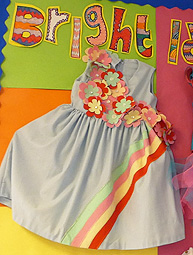 Do you fancy yourself the next in Fashion? Designing, developing and making clothes? You could learn how to do that on our Fashion and Textiles course! You will learn to research a broad range of artists and designers and experiment with a wide range of materials and techniques. During the course, we make a minimum of two garments, requiring you to develop your sewing skills and use your imagination to design, style and create.
Do you fancy yourself the next in Fashion? Designing, developing and making clothes? You could learn how to do that on our Fashion and Textiles course! You will learn to research a broad range of artists and designers and experiment with a wide range of materials and techniques. During the course, we make a minimum of two garments, requiring you to develop your sewing skills and use your imagination to design, style and create.
The BTEC Tech Award in Art and Design Practice is a KS4 qualification designed for 14-16 year olds in schools to be taken alongside GCSEs. The qualification recognises the value of learning skills and knowledge for both practical and industry use.
How is the course structured & assessed?
The course is made up of three units, called Components.
Component 1 - Creative Practice in Art and Design Pearson Set Assignment
Task 1 - Investigation
research into artists and designers
primary and secondary research
initial practical response
Task 2 - Ideas generation
Brainstorming • mind mapping • mood boards • visual methods
Experimentation with materials, techniques and processes.
Task 3 - Development and creation
To develop your final outcome(s) you will need to explore and experiment with a wide range of materials, techniques and processes. Try out different alternatives and test possible creative solutions.
Task 4 - Presentation
You will need to present your work in a logical format which shows the strengths and qualities of your creative response.
Component 2 - Component 2 - Responding to a Client Brief Pearson Set Assignment
Completed in class under exam conditions, you will independently research, experiment and produce a final textile product that responds to the client brief. This exciting challenge allows you to show all the skills you have learned during Component 1.
The two components in the qualification give you the opportunity to develop knowledge and understanding of the art and design industry, and relevant skills such as research, problem solving, communication and practical skills.
What can these qualifications lead to?
The Level 2 qualification will lead to these exciting options,
A Levels, as preparation for entry to University, in a range of subjects including, Fashion and Textiles, Art or Photography.
Study of a vocational qualification at Level 3, such as a BTEC National in Art and Design, with a focus on fashion, textiles or art. This path prepares you for employment or apprenticeships or to studying a degree in the art and design areas.
Programme of Study KS4 GCSE Photography
Head of Department: Mrs A Ryder
Contact email address: rydera@broughtonhall.com
Specification: AQA
Qualification: GCSE Photography
 The Photography course will teach you to look at the world in a creative way. The creative potential stimulated in this course will enable you to apply creative, analytical and critical thinking and problem solving, in order to visually communicate ideas through photography. This awareness can also be employed to any other course that you do. You will develop skills in creative and practical problem solving, developing ideas through research, practical application, analysis and critique and gain better organisation. These transferable skills gained through the study of Photography are, in general, of wide applicability.
The Photography course will teach you to look at the world in a creative way. The creative potential stimulated in this course will enable you to apply creative, analytical and critical thinking and problem solving, in order to visually communicate ideas through photography. This awareness can also be employed to any other course that you do. You will develop skills in creative and practical problem solving, developing ideas through research, practical application, analysis and critique and gain better organisation. These transferable skills gained through the study of Photography are, in general, of wide applicability.
Throughout these courses, students will learn about a variety of photographic media, techniques and processes including hands-on experimentation with traditional techniques and the use of computers for Photoshop and digital media, utilising these techniques and equipment, to make brilliant images.
How is the course structured & assessed?
Component 1 - Portfolio 60%
Over the two year course pupils will explore a wide range of media, techniques, photographers and artists work to put together a portfolio of work which makes up 60% of their GCSE. This includes both a sustained project and a selection of other work. To complete the portfolio a minimum of 1 hour a week additional work time outside of lesson is required.
Component 2 - Externally Set Assignment - Exam 40%
The exam paper is issued to candidates on or after the 1st January during the second year of the course. The exam paper will provide candidates with a range of written and visual starting points, briefs, scenarios, and stimuli. From these, one must be selected upon which to base their personal response. Candidates will have a preparatory period determined by the centre, followed by a supervised exam period of 10 hours. This will take place during lesson time and will be over two days. There is no written exam for this qualification which means no revision!
What can these qualifications lead to?
The GCSE photography course is the perfect foundation if you plan on studying a creative subject at a higher level or working in the ever expanding creative industry. At 6th Form we offer A Level Art and Design courses in Fine Art, Photography and Textiles.
Photography could lead to academic or vocational degrees relating to Art careers, Advertising, Commercial work, Editorial, Fashion, Film, Food, Forensic, Industrial, Architectural, Ariel, Portraiture and Wedding photography, Sports and Travel, Press photography, Photojournalism, Fine Art, Editing, Fashion photography or Styling, the Film industry, Forensic science, Curating, Image Library, etc.

